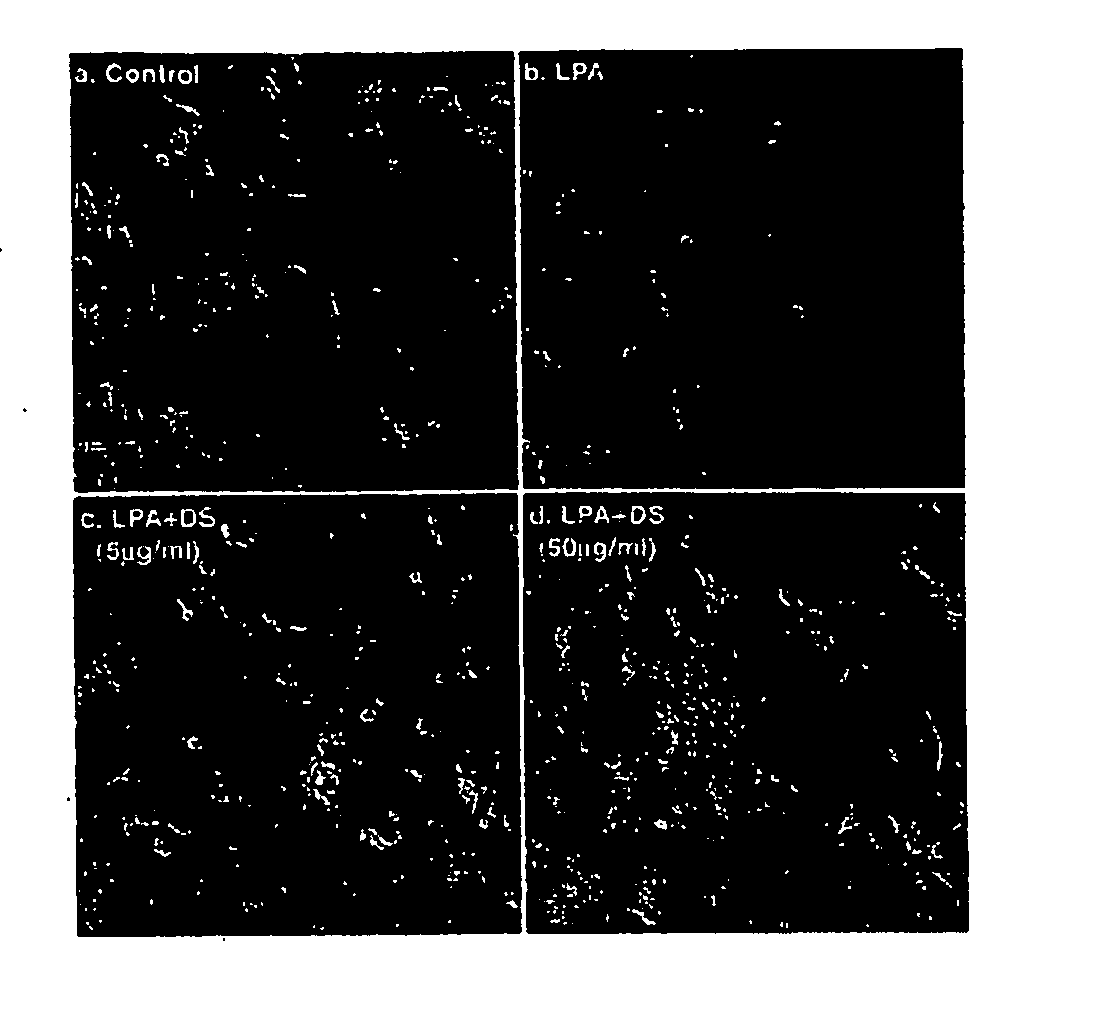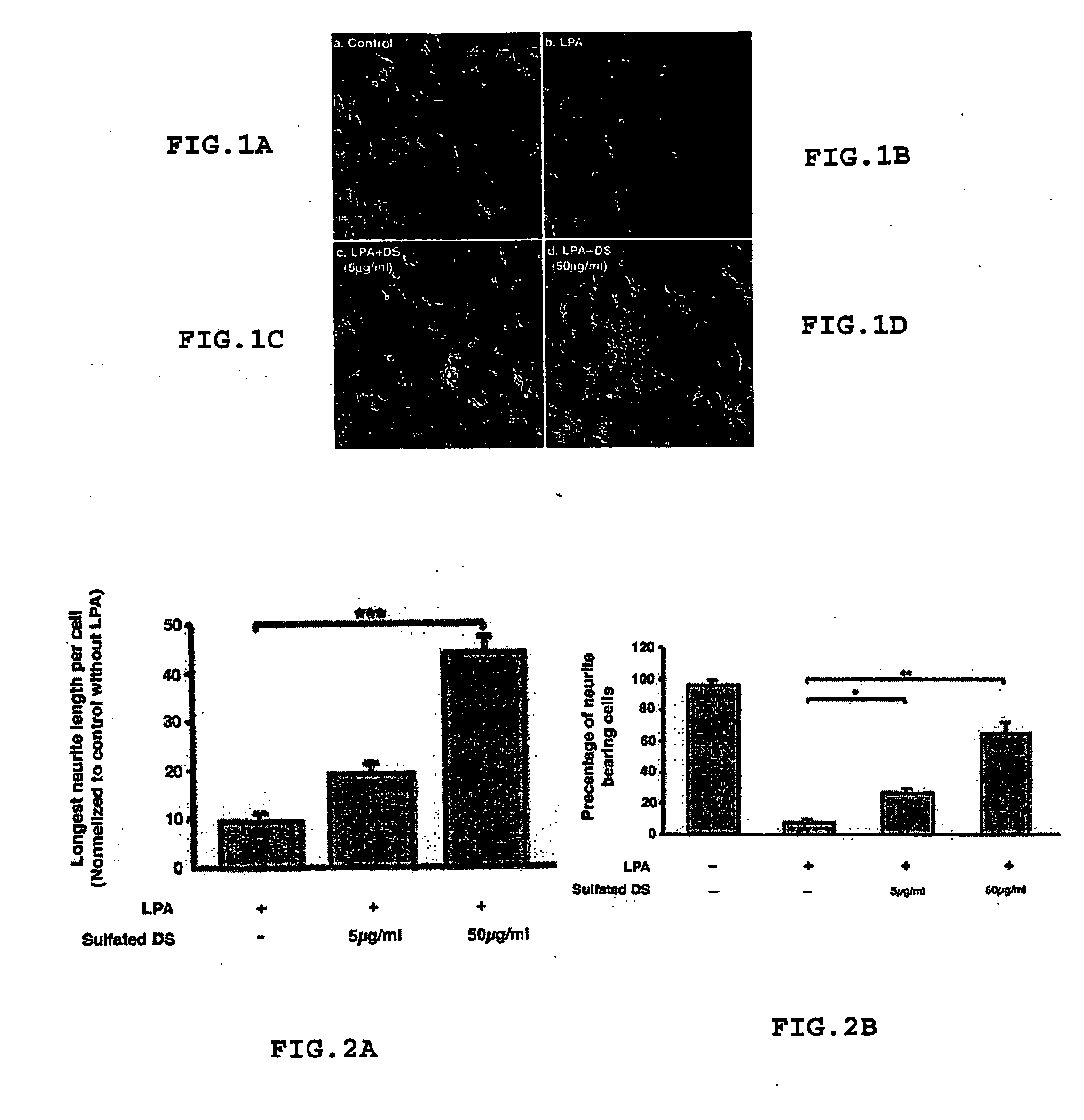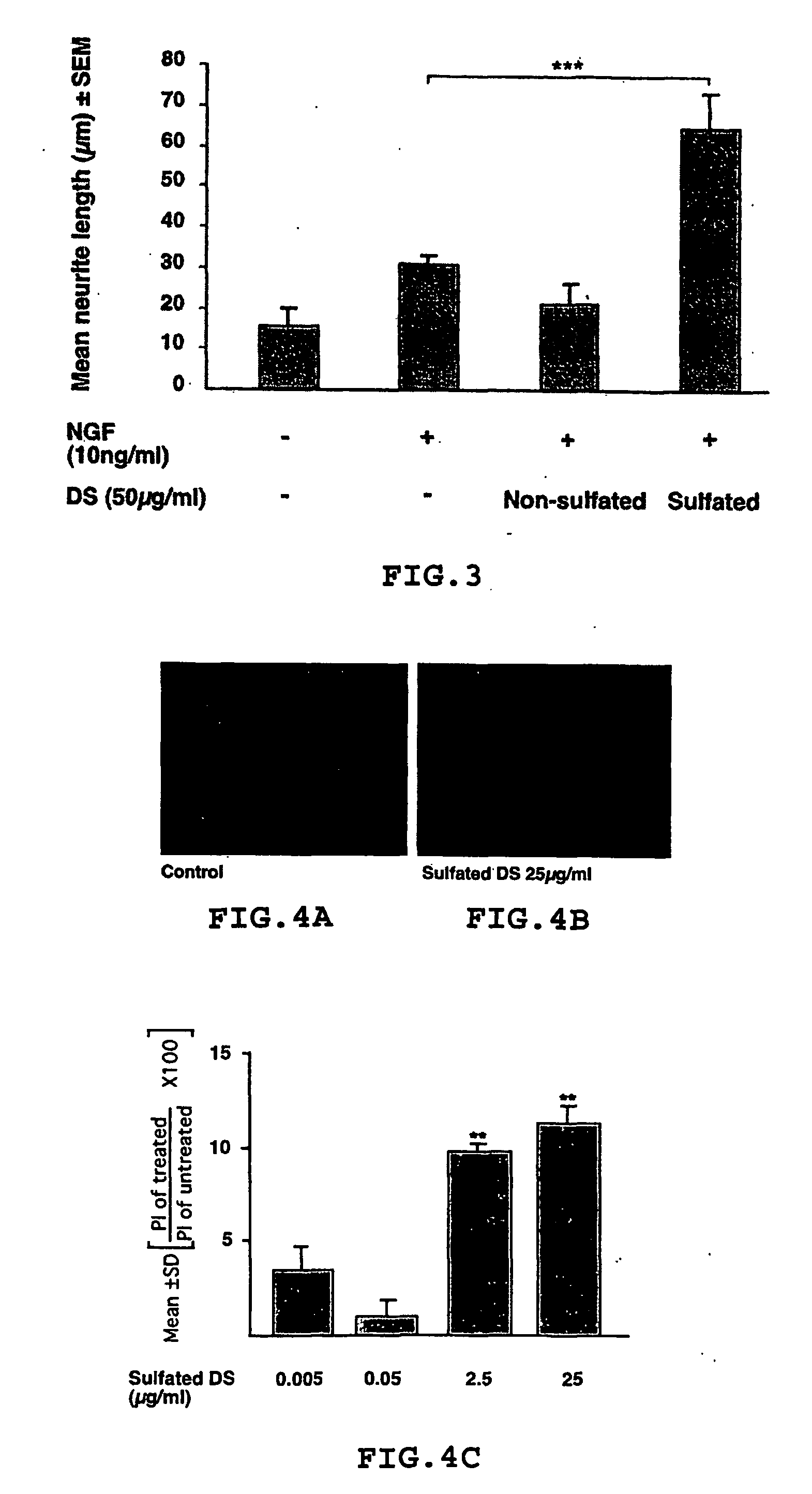Method for Treating or Inhibiting the Effects of Injuries or Diseases that Result in Neuronal Degeneration
a neuronal degeneration and injury technology, applied in the direction of biocide, drug composition, nervous disorder, etc., can solve the problems of poor regeneration ability of damaged neurons, insufficient effectiveness of cells recruited to a damaged site for therapeutic purposes, and irreversible functional deficits, etc., to achieve the effect of treating, inhibiting or ameliorating the effects
- Summary
- Abstract
- Description
- Claims
- Application Information
AI Technical Summary
Benefits of technology
Problems solved by technology
Method used
Image
Examples
example 1
Disaccharides Derived from Chondroitin Sulfate Proteoglycans Overcome Growth Arrest and Neurotoxicity
[0060] Chondroitin sulfate proteoglycans (CSPGs) inhibit central nervous system (CNS) axonal regeneration (Morgenstern D A, 2002), and their local degradation promotes recovery (Bradbury E J, 2002; Yick L W, 2000). The assumptions underlying the present study were that the increased expression of CSPGs observed after injury is part of the self-repair mechanism needed for transient demarcation of the lesion site (Nevo, 2003), and that their degradation products subsequently participate in the cascade leading to neuronal repair. Here, the present inventors show that CSPG-derived disaccharides (DSs), the major building blocks of CSPGs, participate in the rescue of neurons from the consequences of mechanical injury ex vivo and from glutamate-induced neurotoxicity in vivo. Moreover, CSPG-DSs induced neurite outgrowth and prevented neurite collapse (via a Rho-dependent pathway) induced by...
example 2
Disaccharides Derived from Chondroitin Sulfate as a Treatment for Inflammation-Mediated Neurodegeneration
[0079] Chondroitin sulfate proteoglycan (CSPG) represents a diverse class of complex macromolecules that share a general molecular structure, comprising a central core protein with a number of covalently attached carbohydrate chains, the glycosaminoglycans (GAGs). Each GAG is made up of repeating disaccharide (DS) units (glucuronic acid / iduronic acid-N-acetylgalactosamine), which are either not sulfated or possess one sulfate per DS (Hascall et al., 1970).
[0080] Studies both in vivo and ex vivo have demonstrated that CSPG is a major growth inhibitor in the central nervous system (CNS), however the inhibitory mechanisms are not clear; inhibition by CSPG might be receptor-mediated (Dou et al., 1997 and Ernst et al., 1995), or might result from the molecule's biophysical or biochemical characteristics (Dillon et al., 2000; Morris, 1979; Zuo et al., 1998; and Condic et al., 1999). ...
example 3
Chondroitin Sulfate Proteoglycan-Derived Disaccharides as a Therapeutic Compound for Glaucoma
[0112] In the eye, CSPG is highly abundant, serving many functional roles during development and maintenance of the tissue (Koga et al., 2003). For example, it was shown that CSPG contributes to the stromal transparency in the corneal tissues and also contributes to neuronal network formation and maintenance of the interphotoreceptor matrix (Tanihara et al., 2002). CSPG is further upregulated in pathological condition of the eye such as in glaucoma (Tezel et al., 1999; Johnson et al., 1996). It was directly shown in histochemical studies that CSPG levels are elevated in cases of laser-induced glaucoma and antibodies against CSPG were observed in patients with glaucoma (Tezel et al., 1999; Johnson et al., 1996).
[0113] In the last years, it was demonstrated by several different authors that CSPG degradation with a specific enzyme, chondroitinase ABC, promotes CNS recovery (Bradbury et al., 2...
PUM
| Property | Measurement | Unit |
|---|---|---|
| concentration | aaaaa | aaaaa |
| volume | aaaaa | aaaaa |
| depth | aaaaa | aaaaa |
Abstract
Description
Claims
Application Information
 Login to View More
Login to View More - R&D Engineer
- R&D Manager
- IP Professional
- Industry Leading Data Capabilities
- Powerful AI technology
- Patent DNA Extraction
Browse by: Latest US Patents, China's latest patents, Technical Efficacy Thesaurus, Application Domain, Technology Topic, Popular Technical Reports.
© 2024 PatSnap. All rights reserved.Legal|Privacy policy|Modern Slavery Act Transparency Statement|Sitemap|About US| Contact US: help@patsnap.com










